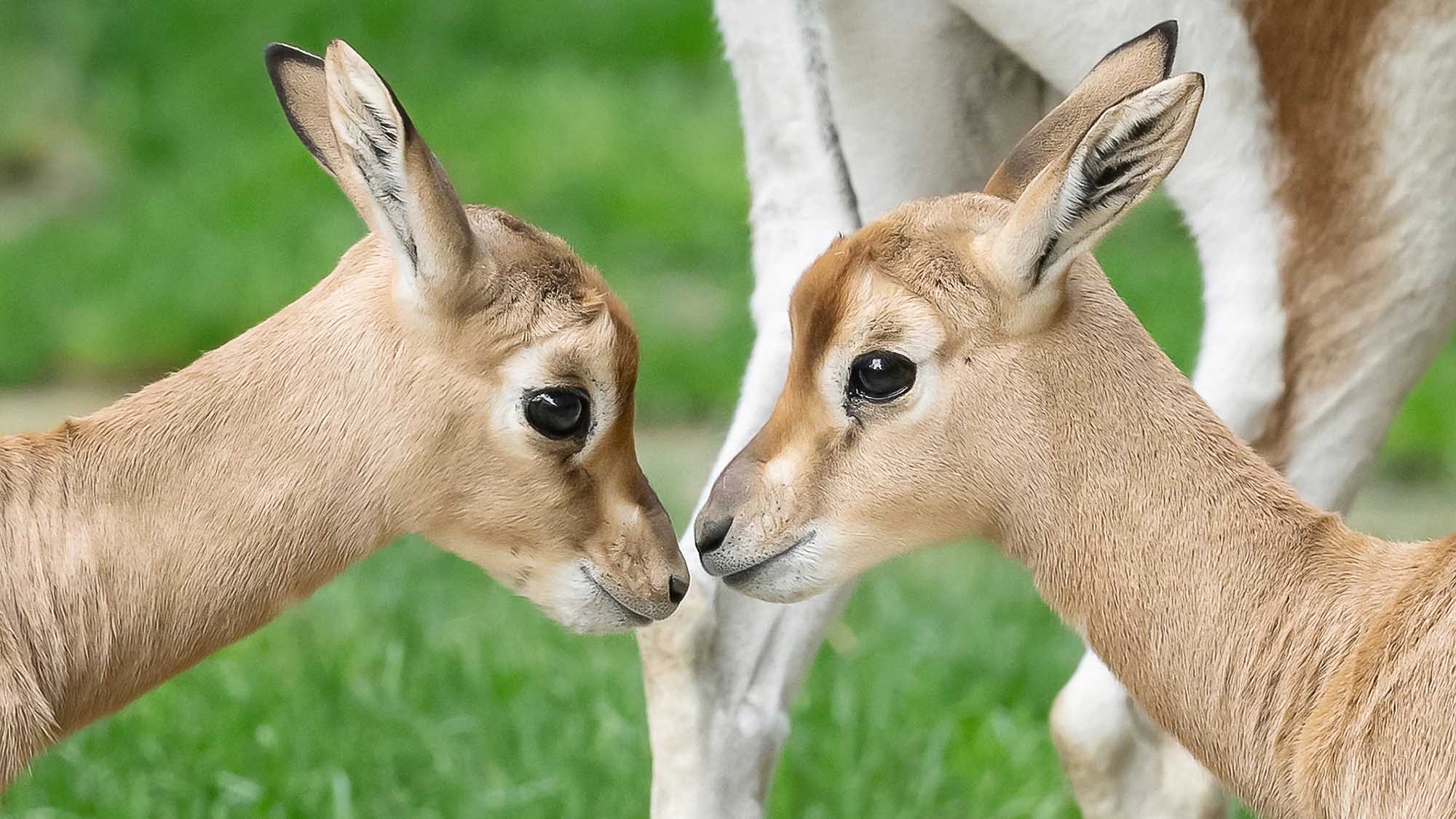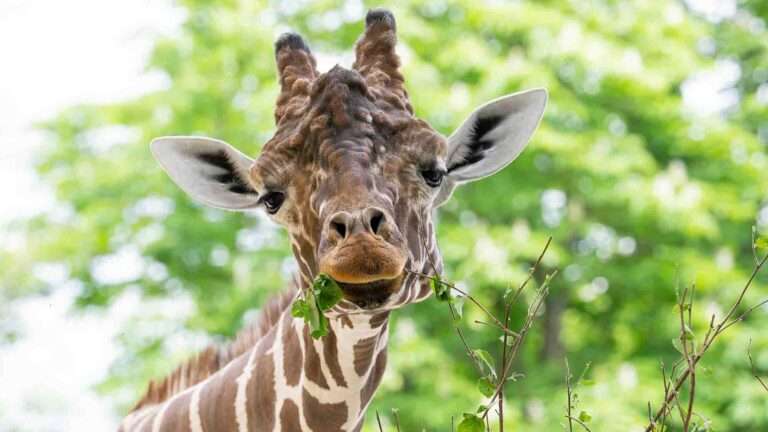These two newborn gazelle siblings of a critically endangered species are enjoying the soothing springtime sunshine at a zoo in Austria.
Born in April, the baby dama gazelles are now eagerly discovering their spacious enclosure at Vienna’s Tiergarten Schoenbrunn zoo.
But their mum is careful always to keep an eye on them as the dynamic duo hop around to the delight of the zoo’s visitors.
At one point the mother shares a meal of their favourite branches with one of her youngsters.
Zoologic curator Folko Balfanz said: “They are lying in the grass most of the time, just enjoying the sun. However, slowly but steadily there are examining every inch of their enclosure. They are really curious.”
Balfanz added: “We expect the significant ringed horns to grow before their first birthday.”
Zoo Vienna spokeswoman Corinna Buergmann told Newsflash: “The siblings are a boy and a girl.
“Dama gazelle herds always consist of one male animal and several females.
“Apart from our frisky duo, no further dama gazelles have been born recently at Schoenbrunn Zoo.”
Zoo director Stephan Hering-Hagenbeck said: “The species has been successfully bred at Schoenbrunn Zoo and a few other zoos as part of the European Endangered Species Programme.
“It has even been possible to reintroduce them in protected areas of their former habitats. This is another encouraging aspect of our cooperation.”
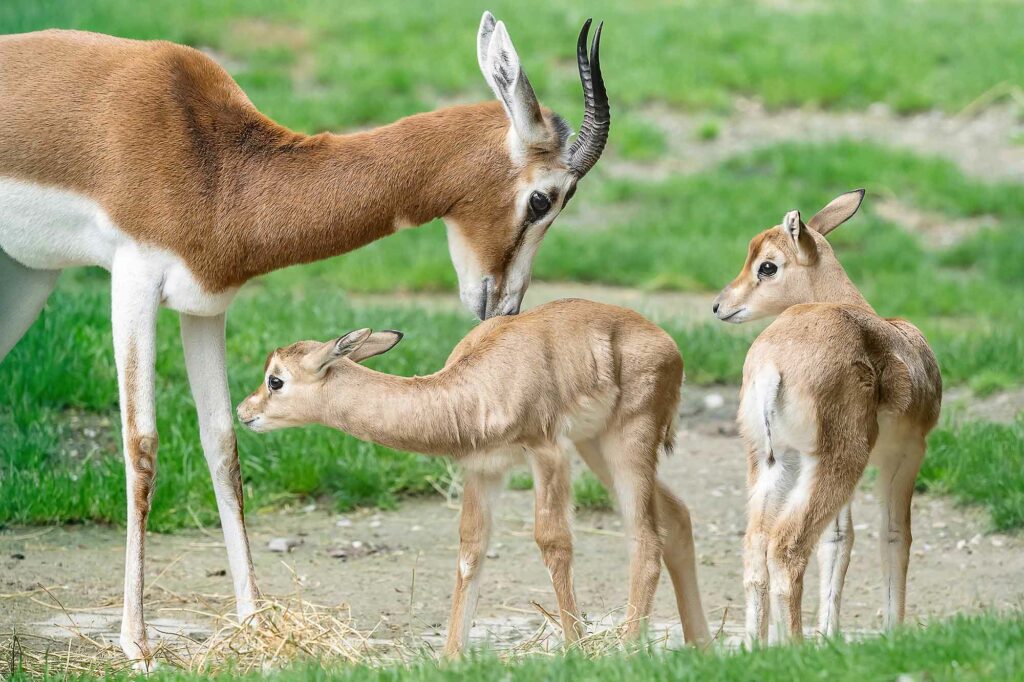
(Daniel Zupanc/Newsflash)
Apart from Vienna Zoo, the dama gazelle (Nanger dama) is present in captive breeding programmes in other European institutions as well as in North America, North Africa and the Middle East.
The gazelle – also known as the addra gazelle or mhorr gazelle – lives in the African Sahara desert and the Sahel.
A critically endangered species, it has disappeared from most of its former range due to overhunting and habitat loss.
With a wild population of less than 500, the dama gazelle is listed as critically endangered by the International Union for Conservation of Nature’s (IUCN).
The IUCN is an international organisation working in the field of nature conservation and sustainable use of natural resources headquartered in the Swiss town of Gland.

(Daniel Zupanc/Newsflash)
Little action is taken to protect the species in most of the poor countries where populations remain such as Mali, Niger and Chad. While the national parks are poorly guarded, poaching is still a dominating issue.
Another reason for the decline of the dama gazelle is habitat destruction. Humans cut down the branches of the trees on which this gazelle feeds. As a result, the trees die and the gazelle cannot eat.
The dama gazelle’s habitat includes grassland, shrubland, semi-deserts, open savanna and mountain plateaus. Its diet includes grasses, leaves, shoots, and fruit.
The dama gazelle – which has a lifespan of up to 12 years in the wild or 18 years in captivity – is white with a reddish-brown head and neck.
Both sexes usually have medium-length ringed horns curved like an ‘S’. Males’ horns are about 14 inches long while females’ horns are much shorter.
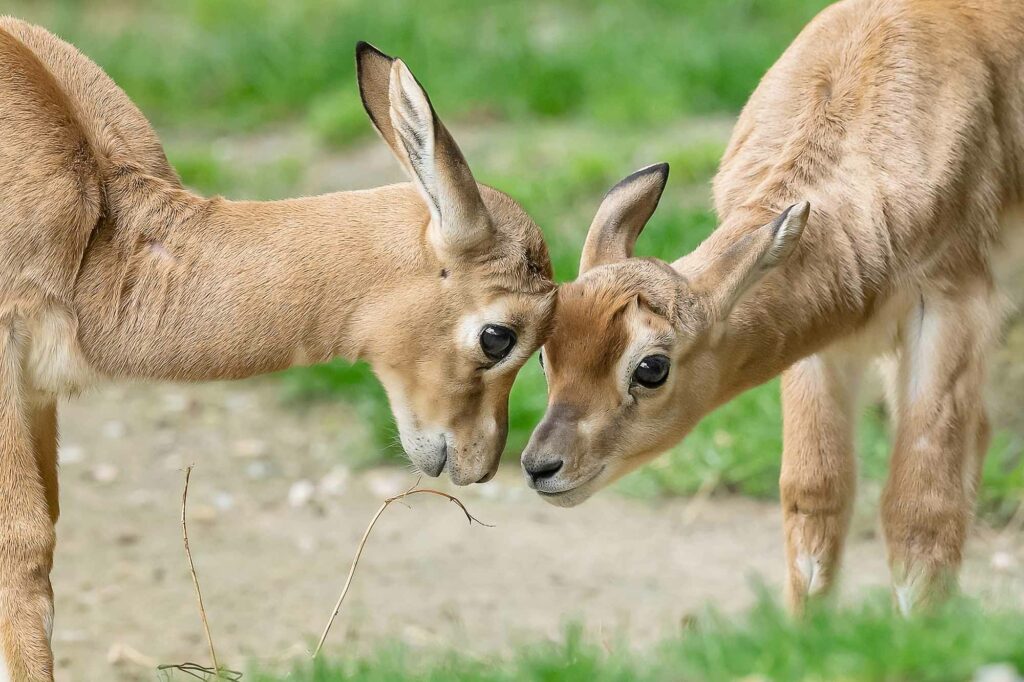
(Daniel Zupanc/Newsflash)
It is between 35 and 37 inches tall at the shoulder and weighs between 5.5 and 11.8 stone. The head is small with a narrow muzzle, and the eyes are relatively large.
A few days following birth, the animals are strong enough to follow the herd. After a week, they are able to run as fast as the adults.
Tiergarten Schoenbrunn was established by the royal Austrian-Hungarian Habsburg Family in the magnificent park of Schoenbrunn Palace in Vienna’s Hietzing district, back in 1752.
Today the institution – which contains around 8,000 animals from 700 species on an area of 17 hectares – is the world’s oldest zoo still in operation. It has registered more than two million visitors every year since 2006.
British zoologist Anthony Sheridan’s biannual Best European Zoo ranking has listed Schoenbrunn Zoo on top five times since 2008.
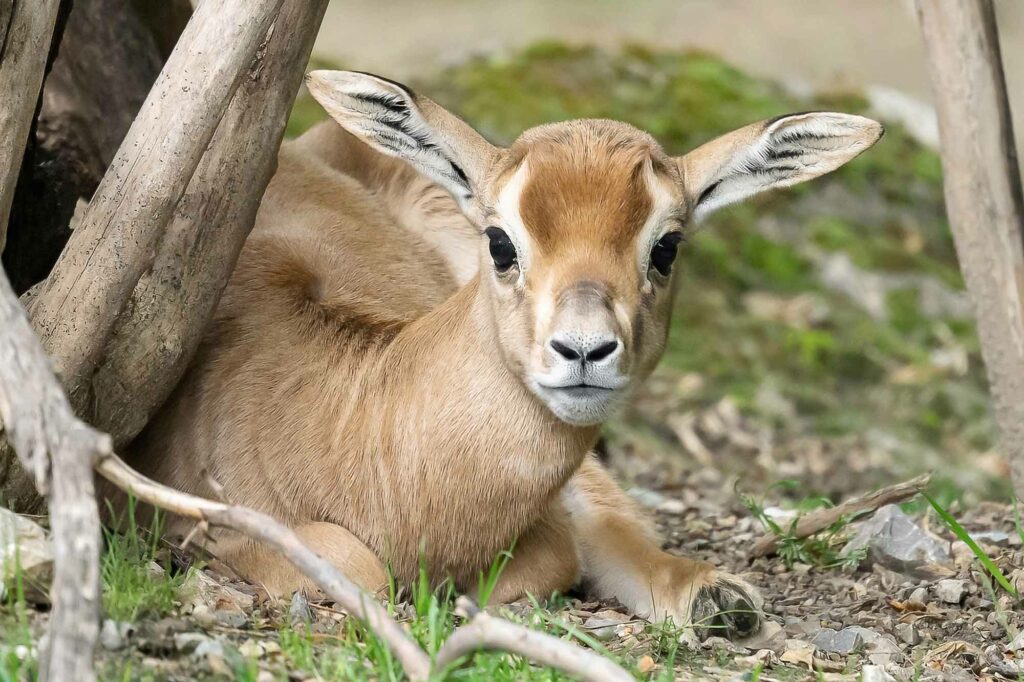
(Daniel Zupanc/Newsflash)
To find out more about the author, editor or agency that supplied this story – please click below.
Story By: Thomas Hochwarter, Sub-Editor: Marija Stojkoska, Agency: Newsflash
The Ananova page is created by and dedicated to professional, independent freelance journalists. It is a place for us to showcase our work. When our news is sold to our media partners, we will include the link here.

